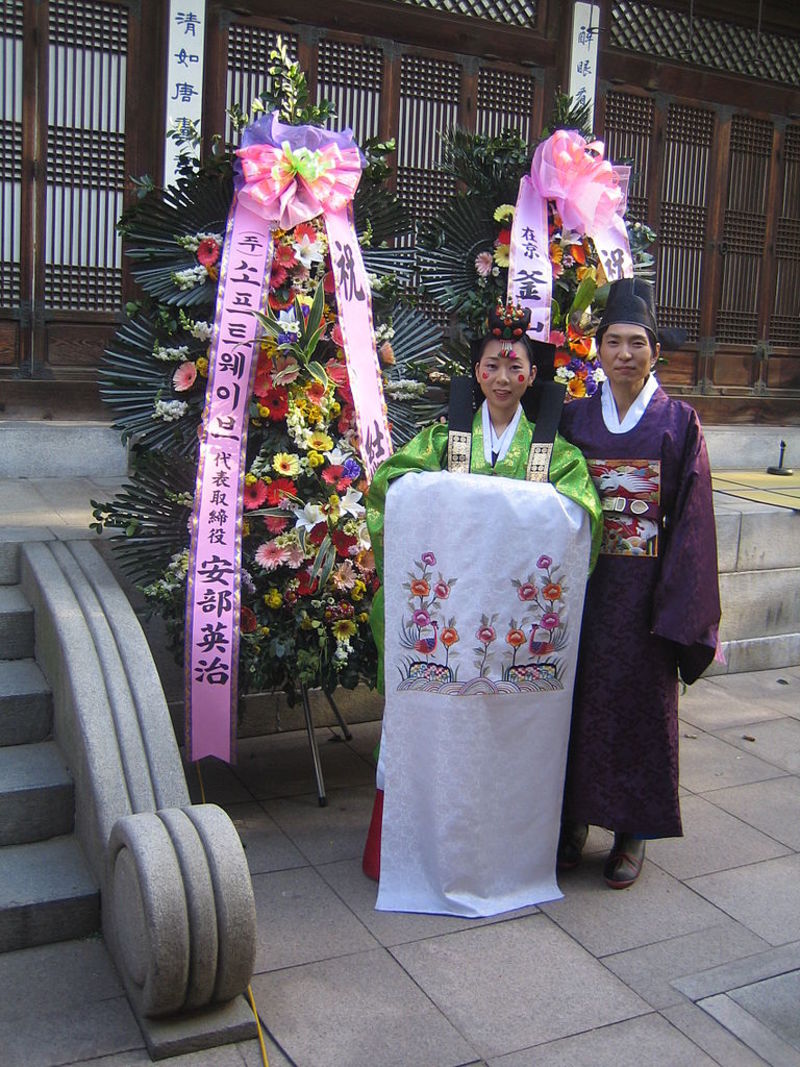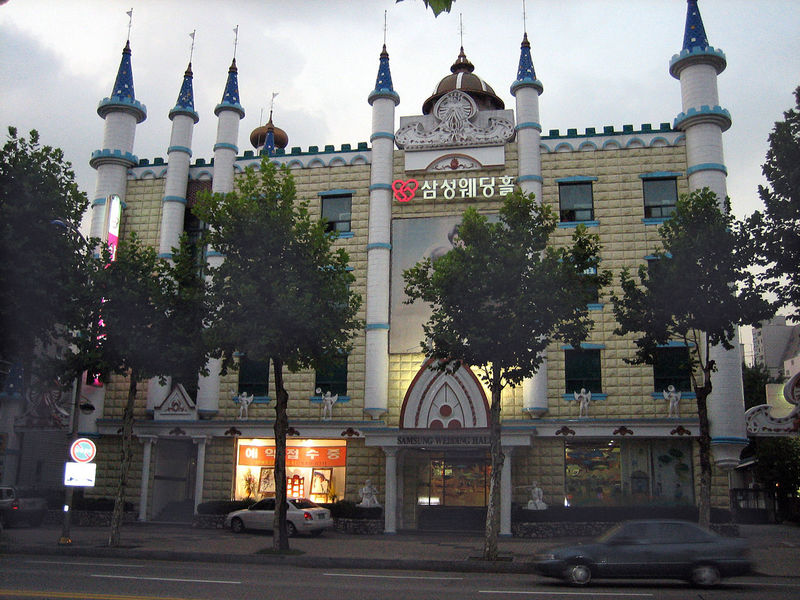Korean Wedding Traditions
Korean weddings can be either arranged ("seon") or based on love, with both types deeply involving both families in the process, including traditional gift exchanges like the "hahm". Key traditions include the exchange of wooden ducks representing lifelong commitment and ceremonies such as the "kunbere" and "hapgeunrye", symbolizing unity and shared futures. Modern Korean weddings may blend these time-honored customs with Western elements like white wedding dresses and tuxedos, often held in specialized wedding halls.
Korean Wedding
There are two types of weddings in Korea - arranged ("seon") and "love". It could not be said that the arranged wedding is the one without love. It is just that the arranged wedding includes high level of involvement of two families.
Two families arrange a meeting but the final decision about getting married is entirely on two persons. Usually a person has to participate in several meetings before he or she finds the right person. Most families or persons use services of matchmakers.
After announcing engagement a groom has to send some presents to the bride's family. These presents used to be delivered in the special box called "hahm" (ham). The box tradtionally included 3 groups of objects - "honseo" (marriage paper), "ch'aedan" (red and blue fabrics) and "honsu" (valuable items). The hahm was carried by the group of groom's friends. Each person in this group had their face dyed black.
In front of the bride's house they offer the hahm for sale. Members of bride's family would greet them and offer them some money. Two groups start funny negotiation which end successfully.
Before wedding a groom brings a pair of wooden ducks ("kireogi") to the family of his future bride. A female duck is usually red, while a male one is blue. In the past live Mandarin ducks or geese were given. Mandarin ducks were chosen as they stay together for life. That is why this present mainly shows groom's determination to stay with his bride till death do them part. Apart from being a popular wedding present wedding ducks can be bought a souvenir.
Ducks are not the only birds present in the Korean wedding traditions. A male and a female chicken were kept at the wedding ceremony. A female chick was wrapped in the red cloth. A male one was wrapped in the blue cloth.
They have dual symbolism. According to a first belief the rooster with its early morning crow symbolizes the new beginning in life. The rooster's crowing should also ward off evil spirits from the wedding. Chicken and their eggs symbolize the wish to have many children.

A Korean bride wears a "chima" skirt and a "jeogori" jacket over it. A traditional Korean norigae decoration is tied to a skirt or a dress. It is believed that this object brings good luck, many sons etc.
On bride's head there is a small crown ("jokduri") or some piece of headgear. A bride has white cotton socks and silk shoes. Some brides will also wear a special piece of cloth with floral decorations.
A Korean groom wears a "gwanbok". It includes a "jeogori" jacket and trousers. He also wears black "mokhwa" boots a black "samo" hat.
In modern day Korea a bride quite often wears western type white wedding dress and a groom is dressed in a tuxedo.

The weddings in Korean cities are often held in a special wedding hall. Korean wedding includes various ceremonies. One of them is called "kunbere". First a bride and a groom bow to each other. Then they pour some wine on the climbing plant grown by the bride's mother.
In the "hapgeunrye" ("drinking") ceremony a bride and groom drink from the same cup. It should show the unity of the newlyweds.
According to Koreans some fruit has symbolic meaning. For example, dates and chestnuts symbolize children. During a ceremony known as "p'ye-baek" which is held immediately after the wedding a bride gives them to groom's parents sitting at a low table. Then they give her some sake.
There is more. The parents take some dates and chestnuts and throw them at bride. She tries to catch as many as possible with parts of her wedding dress.
Bowing represents the act of commitment of bride and groom to each other in the wedding ceremony known as "gyobaerye" (bowing). There is bowing in the "p'yebaek" ceremony too. In this ceremony a bride bows four times to groom's parents.
Korean wedding reception is called "kook soo sang" or in English "noodle party". Koreans always have long noodles at their weddings. They are served in a beef and vegetable soup. Long noodles symbolize the hope of an individual for a long and happy life. Dok Boki rice cakes can also be found at many Korean weddings.
References
Marriage in South Korea
http://en.wikipedia.org/wiki/Marriage_in_South_Korea
Norigae
http://en.wikipedia.org/wiki/Norigae
Korean Wedding Traditions
https://www.theknot.com/content/korean-wedding-traditions
Wedding ducks
http://en.wikipedia.org/wiki/Wedding_ducks
Traditional marriage
http://www.lifeinkorea.com/culture/marriage/marriage.cfm
Image(s)
Korean wedding (photo by Bernat Agullo, Flickr)
https://www.flickr.com/photos/74441074@N00/306436161
Samsung Wedding Hall in Seoul (photo by Jerome Banal, Wikimedia )
https://commons.wikimedia.org/wiki/File:Samsung_Wedding_Hall.jpg
Wikimedia Commons - File:Korea-Beoun-Beopjusa 1760-06.JPG